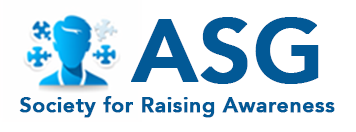Autism Spectrum Disorder (ASD) refers to a group of developmental disabilities – including classic autism, Pervasive Developmental Disorder-Not Otherwise Specified (PDD-NOS), and Asperger’s Syndrome – that affect a person’s ability to understand what they see, hear, and otherwise sense. It is a brain disorder that impacts communication, social interaction, and behavior.
Individuals with ASD typically have difficulty understanding verbal and nonverbal communication and learning appropriate ways of relating to other people, objects, and events. No two people with ASD are the same. As its name implies, ASD is a spectrum disorder that affects individuals differently and with varying degrees of severity. Additionally, ASD is often found in combination with other disabilities.
Early Identification
The characteristic behaviors of autism spectrum disorder may be apparent in infancy (18 to 24 months), but they usually become clearer during early childhood (24 months to 6 years).
As part of a well-baby or well-child visit, your child’s doctor should perform a “developmental screening,” asking specific questions about your baby’s progress. The National Institute of Child Health and Human Development (NICHD) lists five behaviors that warrant further evaluation:
- Does not babble or coo by 12 months
- Does not gesture (point, wave, grasp) by 12 months
- Does not say single words by 16 months
- Does not say two-word phrases on his or her own by 24 months
- Has any loss of any language or social skill at any age
- Any of these five “red flags” does not mean your child has autism.
- But because the disorder’s symptoms vary so widely, a child showing these behaviors should be evaluated by a multidisciplinary team. This team might include a neurologist, psychologist, developmental pediatrician, speech/language therapist, learning consultant or other professionals who are knowledgeable about autism.
For more information, visit the Infants and Toddlers page or the CDC’s “Learn the Signs. Act Early” program.
Signs and Symptoms
People with ASD may have problems with social, behavioral, and communication skills. They might repeat behaviors and might not understand change in their daily activities. Many people with ASD also have different ways of learning, paying attention, or reacting to things.
A person with ASD might:
- have severe language deficits or differences;
- talk about or show interest in a restricted range of topics;
- not point at objects to show interest (point at an airplane flying over);
- not look at objects when another person points at them;
- have trouble relating to others or not have an interest in other people at all;
- avoid eye contact and want to be alone;
- have trouble understanding other people’s feelings or talking about their own feelings;
- prefer not to be held or cuddled or might cuddle only when they want to;
- appear to be unaware when other people talk to them but respond to other sounds;
- repeat or echo words or phrases said to them, or repeat words or phrases in place of normal language (echolalia);
- have trouble expressing their needs using typical words or motions;
- laugh, cry, or show distress for no apparent reason;
- repeat actions over and over again;
- have trouble adapting when a routine changes;
- have unusual reactions to the way things smell, taste, look, feel, or sound;
- be oversensitive or under-sensitive to pain; and
- lose skills they once had (for instance, stop saying words they were once using).
